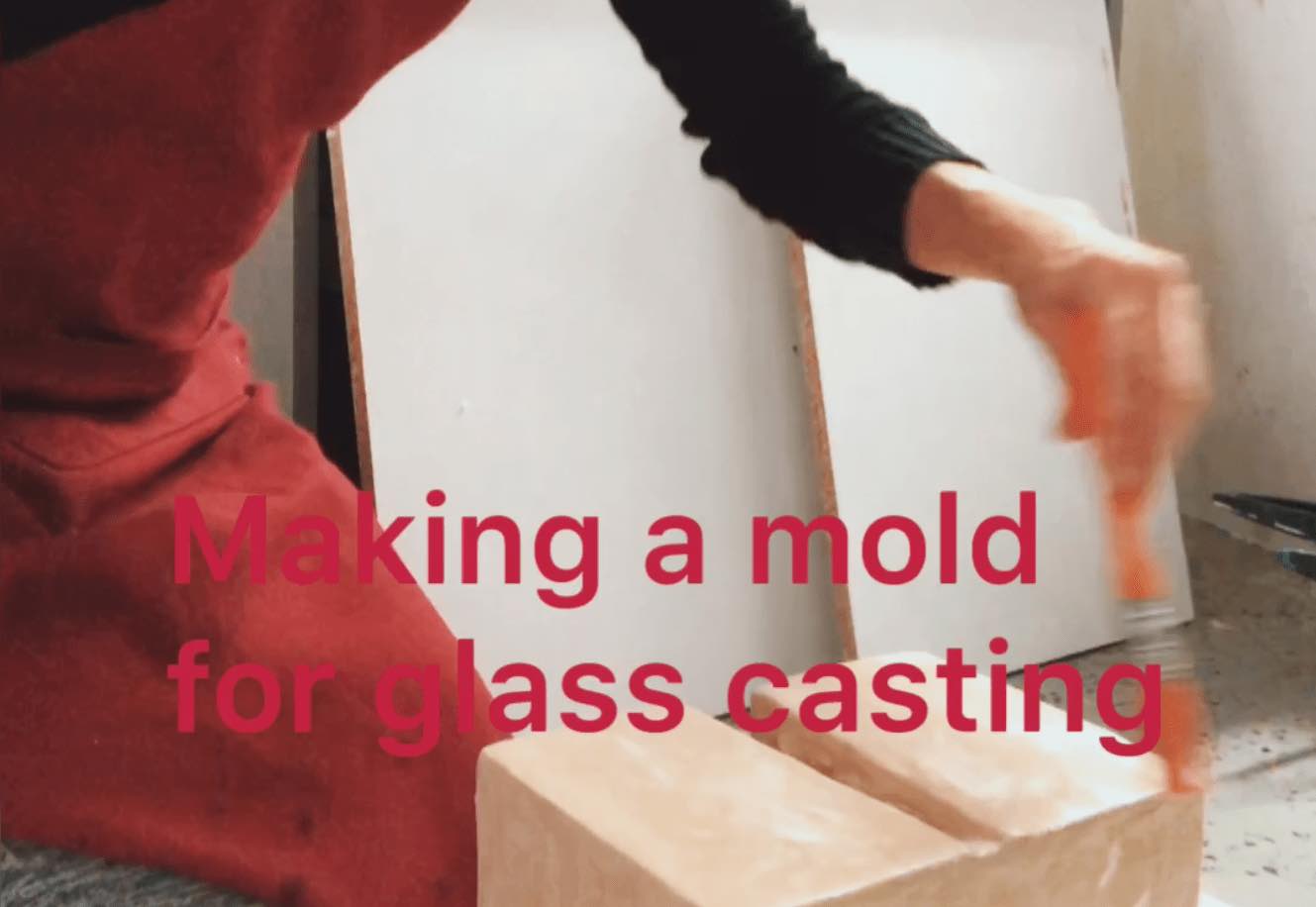
Making a plaster mold to cast a glass sculpture involves a few steps. First, you need to design your prototype with clay or fine art plasticine — the second one is my favorite because you can take as long as you want and it doesn’t dry out.
Once you have your prototype ready, you need to build walls around it and seal the junctures with clay or plasticine to make sure there won’t be any leaking when you pour the plaster mix into the mold cavity.
To make the plaster mold for glass casting, I use a mix of 50% hard plaster and 50% quartz. To calculate how much plaster mix you need, once you have the walls around the prototype ready, you need to measure the width, depth and height of the space between the walls and use this formula:
(Height x width x depth / 2) x 0.64
The result will be the total amount of water you need for your plaster mix. In the picture, the total amount of water needed for my mold is 8.1 liters.
Once you know how much water you need for your plaster mix, you need to calculate how much plaster and quartz are required. To do this you have to multiply the total amount of water by 2 and you’ll get the total amount of investment you need (in this example it’s 16.3: 50% plaster (8.18) and 50% quartz (8.18).
After mixing the plaster and quartz, you can pour the mix into the total amount of water slowly, a little bit at a time. Always use an FFP3 mask when mixing plaster and quartz and try to do this in a ventilated area — the small particles are nasty for your lungs and long-term exposure could lead to serious lung problems.
When you’re done mixing, you can start pouring the plaster mix slowly into the mold cavity, making sure there’s no leaking anywhere. If you spot dripping add more plasticine to the corners where it drips and this should stop the leaking. Once you’ve poured all your mix the final step to prevent bubbles is to use an air compressor for a few seconds.
If this explanation was too confusing, you can watch this video and hopefully, you’ll understand the process better!
